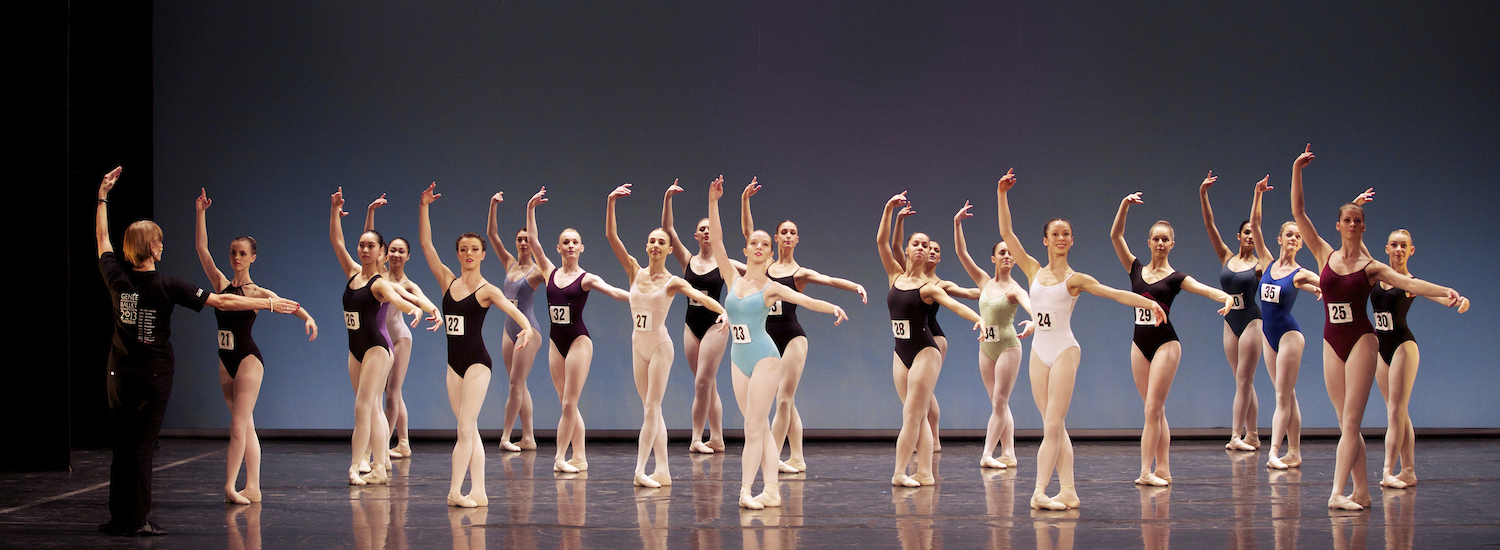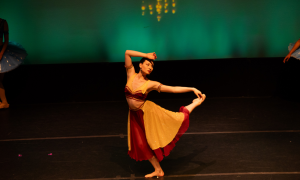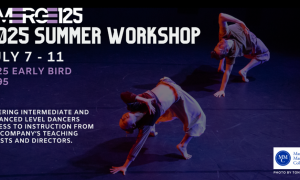One hundred eighty degree turnout. Everyone wants it. Unfortunately, however, only a very tiny portion of dancers are born with something even close to it. And for the majority of the others, natural skeletal structure “gets in the way” of this dream.
But it is possible for a dancer to enhance his/her turnout, and to stretch and strengthen the hip structure so as to maximize turnout. To help explain why dancers, particularly ballet dancers, need turnout in the first place, and how they can go about safely improving their turnout, Dance Informa turns to Nancy and Allegra Romita. Nancy is on faculty in the dance department at Towson University, and together, she and Allegra have founded the somatic approach called Functional Awareness®: Anatomy in Action.
Why turn out?
Turnout, or lateral rotation of the hip, is not necessarily important in all styles of dance. It is, however, certainly at the core of the ballet aesthetic and many other dance forms. When you turn out (from the hip), it can provide a more stable base of support through the foot, Nancy explains.
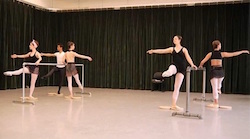
Towson University dance majors use rotator discs at the ballet barre to enhance turnout. Photo by David Merino.
Is there a turnout limitation for each dancer?
“One hundred eighty degree turnout is the ability to rotate each individual hip 90 degrees to each side,” Allegra says. “The result is the toes pointing directly side, right and left. This is an extremely rare condition to the hip joint.”
When dancers force this turnout and try to achieve this position, they are putting too much rotational action in the knee joints, ankles and feet. This, in turn, actually destabilizes the knee and ankle and can result in injury.
“There are many considerations when it comes to improving turnout,” Nancy adds. “Some are structural and some are functional or related to habitual use of the body. Skeletal factors include the structure and facing of the acetabulum, or hip socket, the length, shape and angle of the femoral neck, and the elasticity of the iliofemoral ligament. Although these factors cannot be improved, tendon and muscle structures can support one’s lateral rotation to maximum advantage with training.”
Factors that can inhibit or decrease turnout include imbalanced pelvic alignment, anterior tip of the pelvis, the act of gripping or tucking the pelvis, tension in any muscles of the hip, and overuse of muscles you don’t need.
“One can work professionally as a dancer and contribute to the field of dance performance best by working within their considerations of their own structure and maximizing a balanced neuromuscular approach in order to stabilize the leg for action,” Allegra says.
What are some ways to safely improve turnout?
The key word is safely. Nancy shares that dancers can safely improve turnout by equally training the muscles of the medial rotation (or internal rotation) as well as the lateral rotation (or external rotation).
“Training should be a combination of strengthening and stretching the entire hip structure,” she adds. “Too many dancers just practice a couple of exercises to improve turnout and, by doing so, create an imbalance that defeats all their efforts.”
As an example of an effective exercise, Nancy notes that at Towson University, ballet faculty Catherine Horta Hayden has her students use Balanced Bodies rotator discs within the ballet barre work. This exercise has been shown to improve her students’ turnout and stability of the standing leg in maintaining turnout during action.
Even though it may seem helpful to spend most of your time in a turned out position to get your body accustomed to being that way, overuse of turnout muscles can actually backfire.
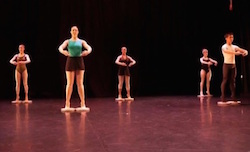
Towson University dance majors integrating rotator discs into classwork to enhance turnout. Photo by David Merino.
“Do not walk, stand and sleep turned out all day, every day,” Allegra advises. “Allow your body to move toward balance by coming back to neutral. This will give your body an opportunity to release unnecessary tension, recruit for appropriate muscle action and recuperate.”
“If the aesthetic of the dance form requires lateral (external) rotation, dancers should be encouraged to focus on healthy and biomechanically smart ways to achieve their maximum amount of turnout,” Nancy adds. “Continuing to consider a neutral pelvis and utilizing the deep lateral rotators of the hip will help improve turnout and maintain healthy turnout in the long term.”
Work within your structure.
“’Perfect’, or 180 degree, turnout is an unrealistic ideal for most dancers and can lead to pain and injury in the hip, knees and ankles,” Nancy stresses. “Work within your physical structure. A quantitative measurement tool for turnout is called The Functional Footprint.”
Functional Footprints® are small boards that have a swivel design to place the axis of rotation at the source of one’s turnout – the hip. This exercise will train dancers to use their turnout properly and also features a degree indicator to check the symmetry of both legs’s turnout.
In addition, Nancy and Allegra encourage dancers to increase their turnout through releasing unnecessary tension. Their tips include:
- Release the muscles of the hip that are not needed to engage in rotation. A tight IT band and tensor fasciae lattae muscle often impedes recruitment of the deep lateral rotator muscles.
- Stretch the medial and lateral rotators of the hip, the hamstrings and hip flexors to ensure resiliency of action for turnout. Foam rolling, for example, can release this tension as well.
- Somatic practices such as the Functional Awareness®, Bartenieff Fundamentals, Alexander Technique or Feldenkrais Method are useful to discover ease in action and to release unnecessary tension.
To learn more about Nancy and Allegra Romita’s Functional Awareness®, along with their upcoming workshops and tips, visit functionalawareness.org.
By Laura Di Orio of Dance Informa.
Photo (top): Genée International Ballet Competition 2013. Photo by Andy Ross.


